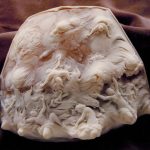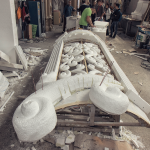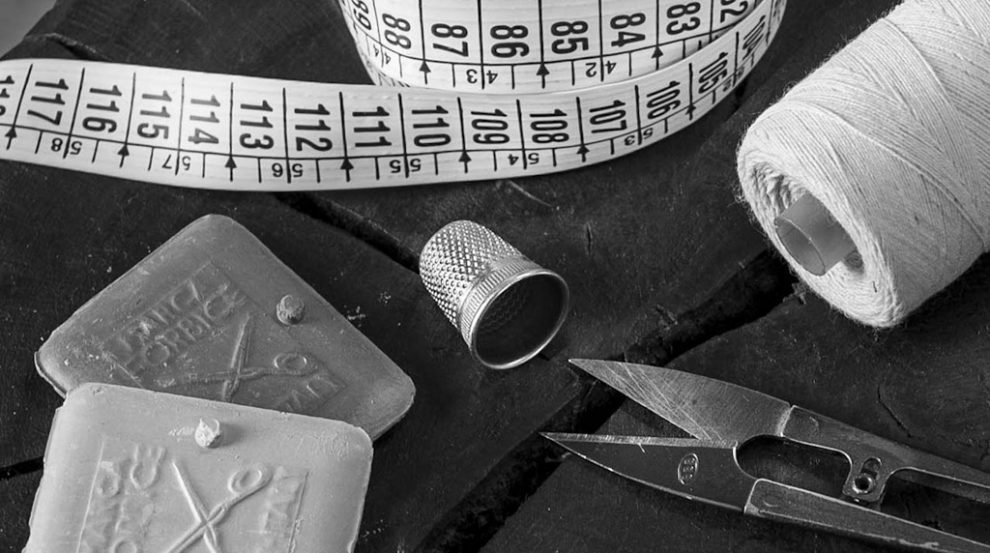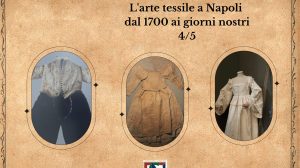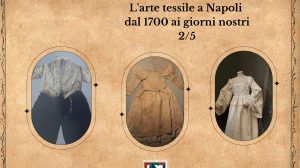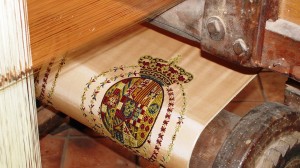The worldwide famous style ‘made in Naples’ developed in the shadows of Vesuvius several centuries ago and embodies the creativity, style and elegance of an entire population and its culture through the mastery of Neapolitan tailors.
The history of the tradition of Neapolitan tailoring can be summarized as follows :
- In 1351, the Confraternita dei Sartori was established in the church of Sant’Eligio al Mercato – when Naples was at the peak of its splendour, capital of the Kingdom of the Two Sicilies and landmark of style.
- In 1400, the first wool and silk industries flourished in Naples, processing those cuts and fabrics soon requested by all European courts. The Neapolitan tailoring school mainly developed throughout these years since many master tailors were called to work for the Aragonese court. French Bernardo Plastet became the personal tailor of Ferdinand I. Throughout the 1400s the Neapolitan tailoring school flourished and local tailors were often asked to go and work in other courts, even as far as Milan.
- In 1611, about 607 tailors were acknowledged, registered and officially authorized to do the job by the Confraternita dei Sartori in Naples.
- Between 1650 and 1700, the Neapolitan tailoring school started to decline, losing clients and prestige.
- Between 1700 and 1800, Neapolitan fashion languished: merchants and members of the aristocracy wore suits considered to be completely out of fashion in important centres such as Milan, London and Paris. The Borbonic court rejected the French fashion, characterized by clean and pure lines, in favour of flamboyant local trends.
- In 1800s, the Neapolitan tailoring school found new energies, thanks to the creativity, the incomparable manual skills and refinement of the fabrics, managing to capture the aesthetic interest of Kings and Heads of State .
Filippo De Nicola, who had a tailoring house in via Partenope, was the first Neapolitan tailor who proved able to export the Neapolitan tradition abroad, just like master tailor Raffaele Sardonelli did later on.
- In 1930s, Neapolitan tailoring style followed the Anglo-Saxon model; but it was in these years that Naples matured its identity, which, in the course of the century, would lead it to the achievement of an unimaginable worldwide success . The Neapolitan sartorial dress is elegant, but never too plaster: the jacket is characterized by the shorter sleeve, that reveals the cuff of the shirt, as well as for the less padding on the shoulders and back, allowing greater mobility . These improvements / innovations definitively eclipsed both the French pompous style and the authoritarian British one.
- In 1946, Salvatore Morziello owned a shop in Via Chiaia which became the leading tailoring shop for menswear in Naples; among his clients there was the President of the Italian Republic, Mr De Nicola.
The Neapolitan tailoring school has perfectioned during the centuries, giving birth to several tailoring houses which, starting as small workshops, soon gained fame and prestige becoming real ateliers. Among the leading ones, we mention:
- Kiton, founded in 1968 by Ciro Paone, which, from a small artisan workshop, grew and conquered the foreign markets, such as Germany, Russia, the USA, China and Korea. Today the company has over 40 stores in more than 15 countries in the world.
- Eugenio Marinella, whose company was founded by his homonym in 1914 on the Riviera di Chiaia in Naples. The position proved to be strategic for the success of the tailoring house. The President of the Italian Republic of that time, De Nicola, commissioned a tie which would be worn by the leading world politicians since then.
- Mario Valentino, whose company was founded in 1952 and is famous for making suits to several famous people;
- Gennaro Rubinacci, nicknamed Bebè, collector of porcelain and lover of the beautiful dress, who gathered the fourty best tailors in Naples and founded the London House by Angioino Castle in 1940s and made it a sort of Circle. When he unexpectedly died in 1961, his 18-year-old son succeeded him changing the name of the business into Rubinacci, though neither the father nor the son have ever been tailors!





